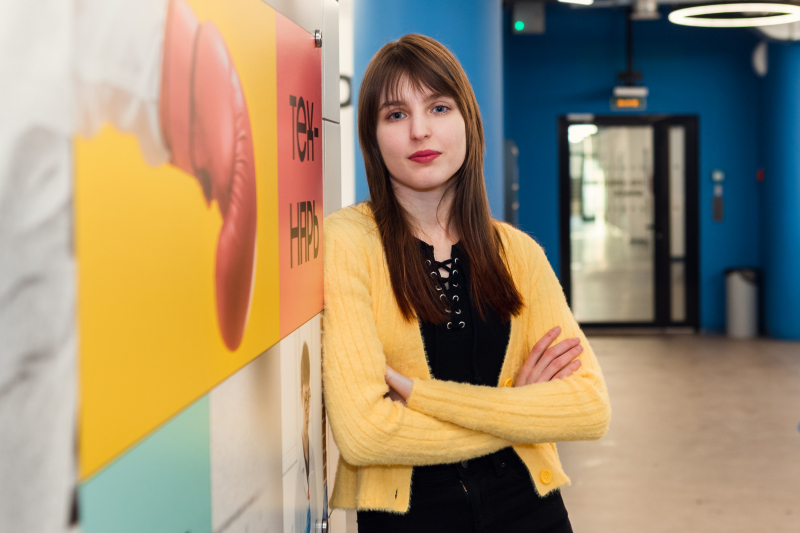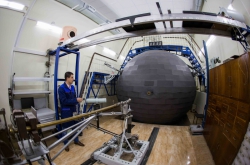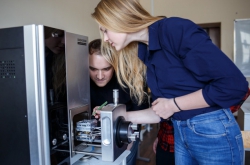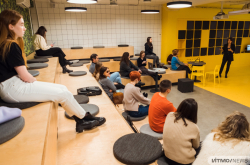Your Bachelor’s program at ITMO is called Green Engineering, but you study quantum chemistry. What does this field focus on and how did you get into it?
My personal interest in this subject was kindled during my first year at university and is still thriving. I didn’t take any specialized courses on the topic at ITMO but I studied some books and tutorials on my own. You can find a lot of useful information on the Stepik, Open Education, and Teach-In educational platforms.
I understand why people may be apprehensive of the words “quantum chemistry,” but its methods are applied in various fields – such as chemistry, biology, and healthcare, and are considered to be reliable research tools.
How can these methods be applied?
One of their applications is in evaluation of the reaction capacity of organic compounds. Many researchers, such as those who synthesize organic materials at laboratories, rely on quantum chemistry to facilitate their work. It used to be that they had to use a great number of chemical agents without even knowing if their chosen method would prove effective, thus risking a waste of time and materials. These days, you can first model a chemical process to learn what kind of parameters, such as pressure and temperature, are needed for the reaction to be effective, and then proceed with hands-on experiments. Some of the most common uses of quantum chemistry in ecology are through biochemistry and molecular biology because these fields address problems at the atomic and molecular levels. I believe that applications of quantum chemistry methods deserve the same attention as those of biophysics, microbiology, and other natural sciences.
Software for quantum-chemical computations (Orca 5.0) and visualization (UCSF Chimera). Image courtesy of Vlada Petrova
You have recently visited the Sirius educational center to work on your research at the intersection of quantum chemistry and ecology. Why did you decide to go there?
I wanted to start doing research as early as in my first year at university, but when I came to ITMO’s SCAMT Institute, I was recommended to wait a little while. Three years later, one of SCAMT’s former Master’s students suggested I reach out to his colleague, a junior researcher at the Shemyakin-Ovchinnikov Institute of Bioorganic Chemistry, to collaborate on a quantum chemistry project. Both of these researchers happened to be lecturers at a Sirius educational program on molecular ensembles analysis and modeling principles for pharmacologically active chemical agents. Before long, I learned about this program and decided to apply for it. I needed to submit a CV, a letter of motivation, a list of publications, and some other documents. As a result, I was among about 20 students who passed the selection.
I think that studying at Sirius is a great opportunity to not only acquire some new skills but also meet new people. At the program, I met students who specialized in chemistry, biology, programming, and medicine – and all of them helped me see the project from different angles. Moreover, I expanded my professional network, so in my future projects I’ll be able to reach out to my teammates.
Importantly, this wasn’t just a workshop, but a full-scale educational program – during our time at the center we had four classes a day during which we focused on both theory and practice. The lectures introduced us to quantum chemistry, molecular dynamics, solvation models, and docking.
What was your project at Sirius about?
It was about the functions of the A17 antibody; as we know, antibodies are what neutralizes various pathogens that enter our body. In this case, the pathogens were organophosphorus compounds (OPCs) (included in the category of organophosphorus compounds are all chemical warfare agents of neuroparalytic effect – Ed.). Since the mechanism by which antibodies perform covalent inhibition of OPCs is quite complex, we went with the reaction of alkaline hydrolysis as a model. Our study required us to use the methods of quantum chemistry to conduct an analysis of electron density and find descriptors – the parameters we use in machine learning to predict possible reaction scenarios.
We taught the program to find correlations between the descriptors and the Gibbs free energy of the reaction. As a result, we were able to predict the course of the reaction for substances that aren’t in our training and test samples with chemical precision. We also identified the descriptors that have the most influence.
A heat map of correlations between descriptors and the Gibbs free energy. On the scale, correlation increases from bottom to top. Lighter areas on the heat map correspond to parameters with the strongest correlation. Image courtesy of Vlada Petrova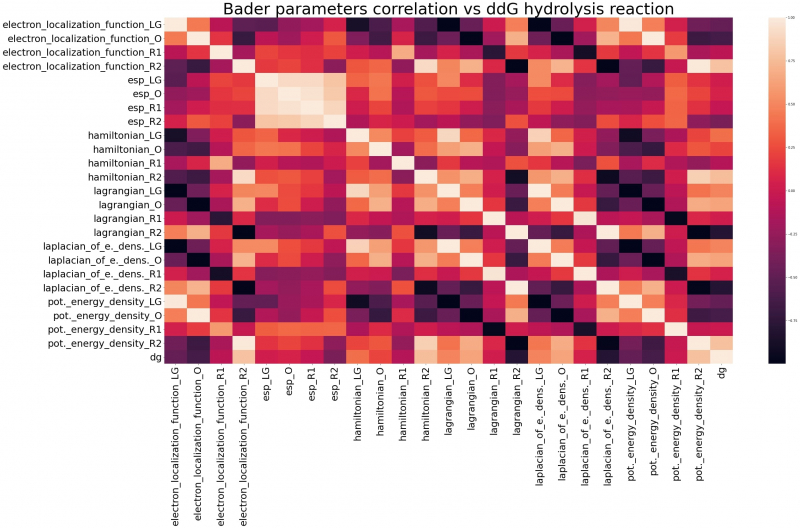
How did the research go?
We carried out our studies over the course of two weeks. First, our team collected and analyzed information on organophosphorus compounds. And the more compounds we could find and add to the database, the better, since machine learning requires large sample sizes. We were able to collect data on some 600 OPCs, but those were regular structural formulae, while quantum-chemical computations require a file that describes the spatial geometry of molecules. So, a programmer from our team automated the conversion of regular formulas into atom coordinates; all in all, we generated 600 spatial structures. Then, each of them had to be geometrically optimized through computations in order to reduce their energy and make the compounds stable. In other words, we would write commands via the server and then launch the software that would carry out the calculations.
Then, we conducted a conformational analysis of the optimized structures. Here’s a simple example to explain what conformers are. Take a molecule of ethane (H3C—CH3): its projection can be presented as two regular triangles laid on top of each other. If they are rotated in relation to one another, their peaks will either match or point in different directions. These are the two conformations, and they occur in unequal degrees since they possess different amounts of energy. We needed to analyze which conformations our molecules may have and identify those with minimal energy. That’s why we conducted conformational analysis. This was all the preparation stage. After this, we analyzed the electron density of the right conformations to learn the parameters that would be used for machine learning.
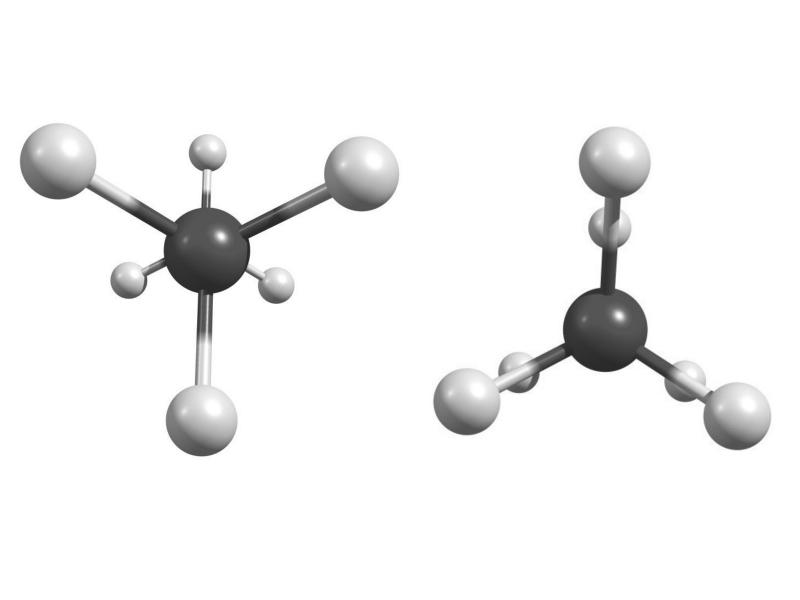
Retarded and eclipsed conformations of ethane. Image courtesy of Vlada Petrova
Will these results see more use in the future?
Everything we’ve done at Sirius is but a small part of a larger project implemented at the Institute of Bioorganic Chemistry of the Russian Academy of Sciences. The model we worked on at Sirius is simplified, but has allowed us to make two key conclusions: one about the possible occurrence scenarios of alkaline hydrolysis of OPCs, and one about the most important descriptors. Knowing the best-suited descriptors allows us to clusterize our OPC database, further improving the software’s predictive capacities in the future.
Do you apply quantum-chemical computations in your studies? What other projects are you working on?
The topic of my graduation thesis is similar to the Sirius project: in both cases, I study organophosphorus compounds and use the same methods of quantum chemistry. At Sirius, I learned to use quantum-chemical computations on more generalized samples, but in my thesis I use them to study agricultural pesticides.
I believe that research on this topic is important because in developing countries, such as India, the issue of regulations on the use of agrochemicals is still very prevalent – and that means that food products can be dangerous and poisonous to consumers.
